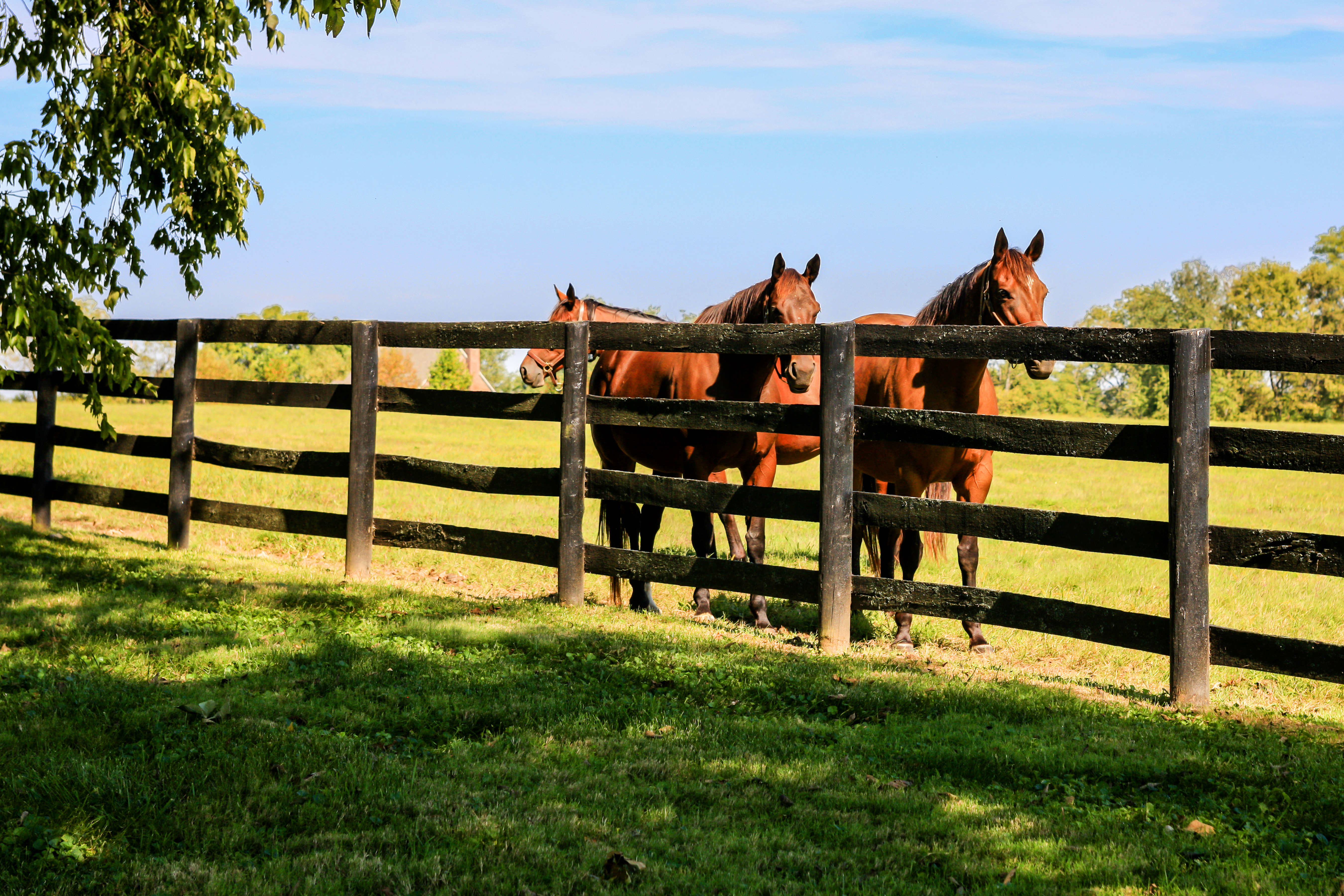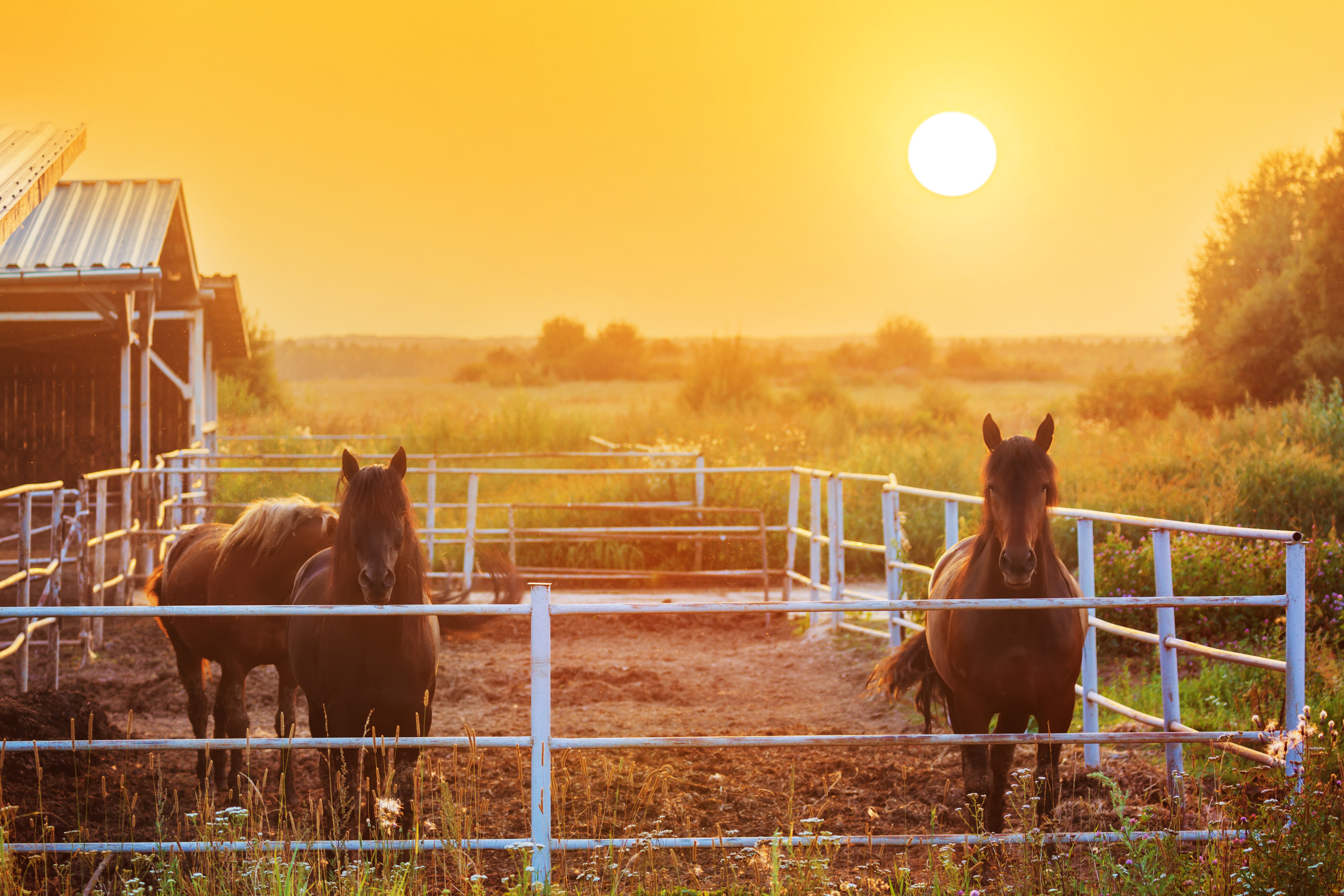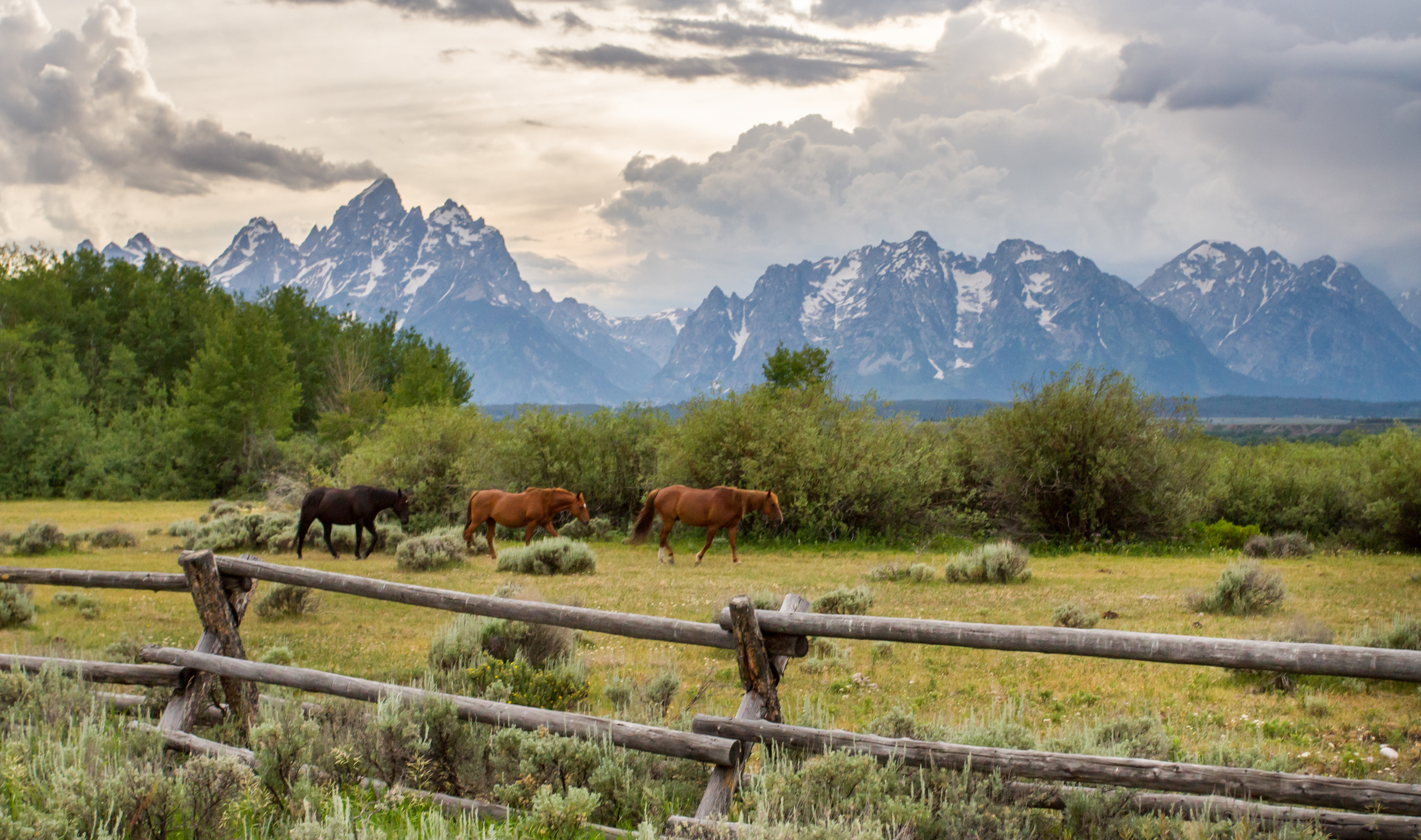
Now is a great time to plan for repairs and upgrades to the fencing on your equine property and around your horse facility.
“We check for unraveled wire, large splintered wood pieces or anything else a horse could puncture itself on,” said Sayda Canizares, owner of Bluestockings, an Arabian and Quarter Horse reining horse breeding facility in Jordanville, New York.
Since fencing can be costly, it is a long-term investment that requires planning. There are numerous fencing materials to choose from. From hot wire or electric tape to vinyl, wood, pipe corrals and more, the options can be overwhelming. When planning to replace or add fencing at your equine facility, consider the following.
Horse Safety
“Horse safety is our first consideration,” said Canizares.
All fencing should be visible and inhibit a horse from trying to run through it or jump over it. This can be challenging for some barns, depending on the type of horses kept there.
“We had one young colt who was obsessed with putting his small head in between the bars of the gate where he could potentially get stuck in a panic,” she said. “We covered all of the accessible gates in chicken wire to prevent this.”
A farm in Ireland told of a young horse who would simply jump out of his paddock, go visit the neighbor horses, then jump back in when he was ready. Once the fence was built up to six feet, and he still jumped out, the farm had to move him to a different property.
Handler Safety
Staff well-being is as important as horse safety. “We consider the safety and practicality of staff when turning out horses, in all seasons,” she said.
Walkways between pastures can limit damage to a separating fence line and provide access with utility vehicles for efficient chores. Alleyways should be wide enough to safely lead a horse in between both sides of the fence and so that a horse cannot reach over and nip or annoy the horse being led.
Keep in mind that you will want to mow these alleyways, so make sure they are wide enough to accommodate whatever type of mower you have.

Practicality
White or black four-rail, post and board fences that follow gently rolling hills are often considered idyllic. While aesthetically pleasing, they are not practical for every farm. Weather, soil type and terrain can determine the type of fencing needed. Wet areas can affect the longevity of wooden posts. Rocky terrain might dictate a sturdy buck and rail fence system that doesn’t require posts being driven into the ground.
Before deciding on a fencing system, consider the terrain and pick an option that meets safety, installation and budgetary restraints.

Future Expansion
Adding new fences might mean converting unused space into pasture or having the ability to divide current turnout areas into smaller paddocks. “We’ve had to accommodate practical turnout to keep certain broodmares/foals separate from the herd and to accommodate any quarantine needs,” Canizares said. “To do this, we maximize the number of gates we have in between each area so that we can increase the number of options we have to carve up different separate paddocks on the fly,” she said.
If you are planning to install new fence in 2018, now is the time to review your options and determine the cost and construction needs. Whether you need entirely new boundary fencing, or fencing that allows you to make better use of your land, it takes preparation to make the most of your funds and your facilities.


